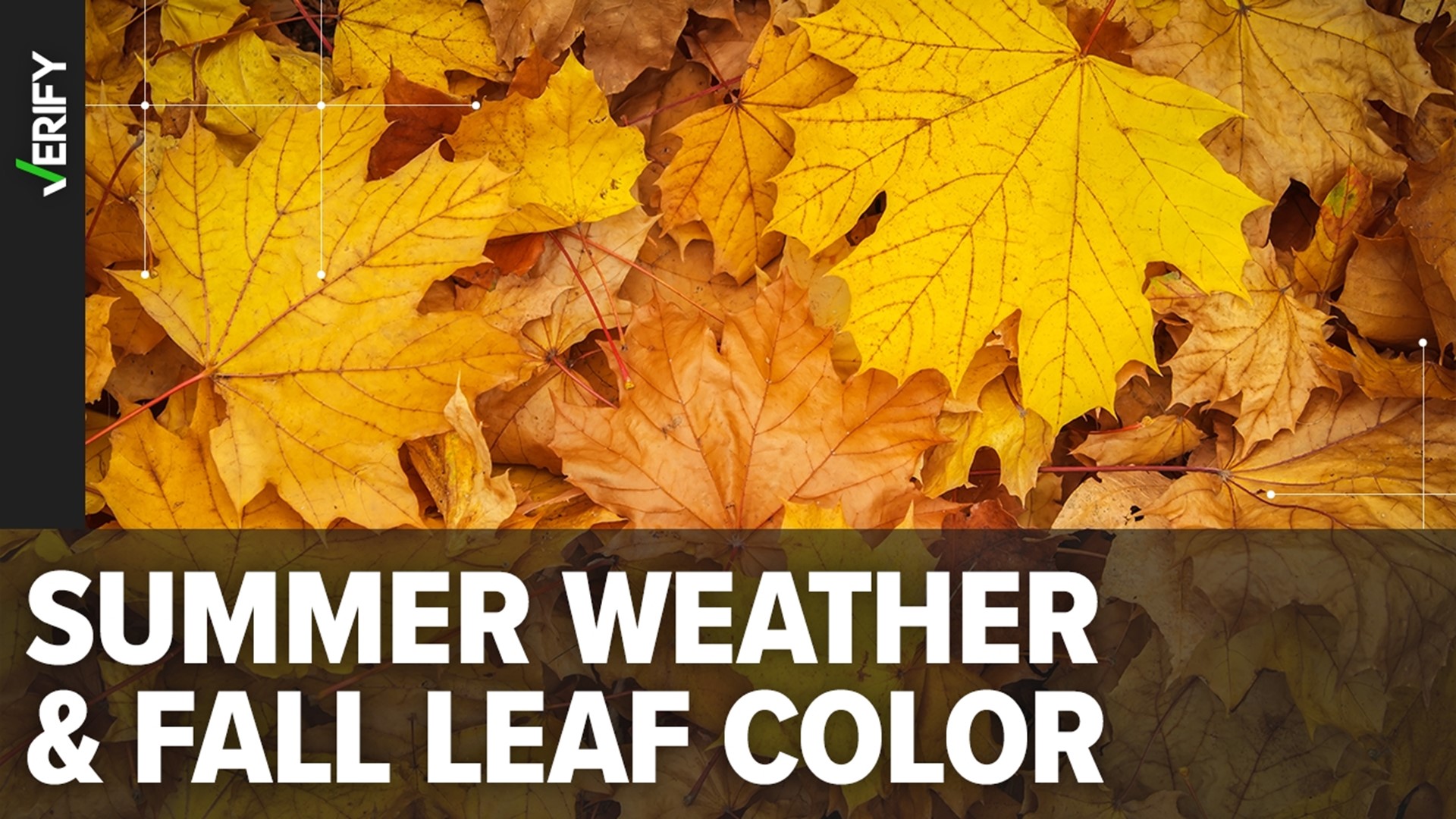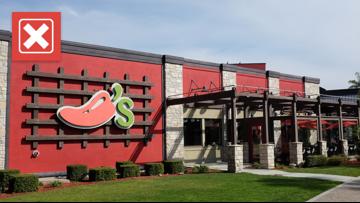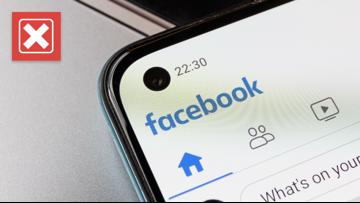Fall is in the air, and for many of us that means sipping on a pumpkin spice latte and breaking out our favorite cozy sweaters.
VERIFY answered four questions about the fall season, including if summer weather affects fall colors and whether the sky appears more blue in the fall.
THE SOURCES
- National Oceanic and Atmospheric Administration (NOAA)
- National Weather Service
- U.S. Forest Service
- Harvard Forest
- NASA
- Meteorologist Brittany Van Voorhees, WCNC
- Meteorologist Christian Morgan, WFMY News 2
- Ethan Frisch, spice expert and founder of Burlap and Barrel, a sustainable spice company
- Lisa Andrews, licensed dietician and nutritionist and CEO of Sound Bite Nutrition
QUESTION #1
Is there a difference between meteorological and astronomical fall?
THE ANSWER
There are two different ways to define seasons: meteorological and astronomical, the National Oceanic and Atmospheric Administration (NOAA) explains.
As the name suggests, meteorologists use the first definition, which is based on the annual temperature cycle and is usually more consistent. Meteorological fall begins on Sept. 1 and runs through the end of November.
Meteorological seasons make it easier to keep records and calculate climatological averages, WCNC meteorologist Brittany Van Vorhees says.
Astronomical seasons, on the other hand, are based on Earth’s position in relation to the sun. The autumnal equinox, which falls on Saturday, Sept. 23 in 2023, marks the start of astronomical fall.
Equinoxes occur when the sun passes directly over the equator, resulting in a nearly equal amount of daylight and darkness, the National Weather Service (NWS) says.
QUESTION #2
Do summer weather conditions affect fall leaf colors?
THE ANSWER
Summer weather conditions do affect fall leaf colors, but the actual leaf outlook may vary based on where you live.
A late spring or severe summer drought can delay the onset of fall colors by a few weeks, according to the U.S. Forest Service.
Summer drought conditions can also stress trees, causing them to lose their leaves or start color production prematurely, Harvard Forest, Harvard University’s 4,000-acre laboratory and classroom, says.
Moisture also plays a role in the vibrancy of fall colors. Adequate summer rains promote good tree health and leaf retention, which will likely lead to a better display of fall colors, according to Harvard Forest.
The right weather during the fall can promote more intense leaf color production, too, Harvard Forest says. The reds require sunlight for production, and are enhanced by cold and sunny days. Meanwhile, rainy and windy weather can knock leaves down prematurely, which could shorten the color display at its peak.
QUESTION #3
Does the sky appear bluer in the fall than in the summer?
THE ANSWER
Wondering why the sky is blue in the first place? According to NASA, when sunlight travels to the Earth’s atmosphere, it’s scattered in all directions because of gas and particles in the air.
Light exists in different wavelengths. Even though sunlight looks white, it's actually made up of a rainbow of different colors. Blue waves are shorter and smaller than the other colors, so those wavelengths scatter more easily.
In autumn, the blue color is often intensified by the position of the sun in the sky and the decreased humidity, which allows the light to scatter more evenly.
QUESTION #4
Is there any pumpkin in pumpkin spice?
THE ANSWER
Ethan Frisch, a spice expert and owner of sustainable spice trading company Burlap and Barrel, told VERIFY, “There's no pumpkin content in pumpkin spice on its own.”
Instead, pumpkin spice is a blend of typically four to five other spices that you may already have in your cabinets: cinnamon, ginger, cloves, nutmeg and allspice.
“Pumpkin spice has a confusing name, obviously, because there is no pumpkin in the spice. But it's a blend of different spices that historically were used with pumpkin and pumpkin pies or pumpkin puddings,” Frisch said. “It varies a lot depending on who's making it, but it's usually kind of warm, rich spices like ginger, cinnamon, nutmeg, things like that. Pumpkin spice may be added to other things; those other things might have pumpkin in it.”
It is still possible the pumpkin spice latte drink you order from your favorite coffee shop might in fact contain pumpkin, but it depends on where you’re getting it from. For instance, some coffee shops like Starbucks add pumpkin puree to their blends.












